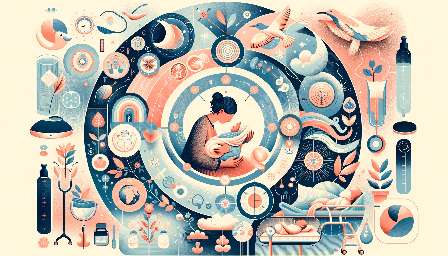Cesarean section (C-section) has become a common obstetric procedure in modern childbirth, playing a significant role in the birthing process. As part of medical interventions during childbirth, C-sections are often performed to ensure the safety and well-being of both the mother and the baby. Understanding the necessity, implications, and impact of this procedure is crucial for expecting parents and healthcare professionals alike.
The Evolution of Cesarean Section
Cesarean section, named after the Roman dictator Julius Caesar, has a long history dating back to ancient times. Initially, it was a last-resort option to save the life of the mother when vaginal delivery was deemed impossible or too risky. Over time, advancements in surgical techniques, anesthesia, and infection control have transformed the C-section into a safer and more routine procedure.
Medical Indications for Cesarean Section
There are various medical reasons that may necessitate a C-section during childbirth. These include fetal distress, malpresentation of the baby, placental complications, prolonged labor, and maternal health issues such as hypertension or diabetes. In some cases, previous Cesarean deliveries may also influence the decision to opt for a repeat C-section.
C-sections can also be planned in advance when certain risk factors are identified, offering a proactive approach to managing potential complications and ensuring the best outcome for both the mother and the baby.
Risks and Benefits
Like any surgical procedure, cesarean sections come with both risks and benefits. Potential risks include infection, blood loss, blood clots, and adverse reactions to anesthesia. Maternal recovery time after a C-section is typically longer compared to vaginal delivery, which may impact bonding with the newborn and emotional well-being. Additionally, there is a risk of complications in subsequent pregnancies, such as placental abnormalities and uterine rupture.
On the other hand, cesarean deliveries can be life-saving in emergency situations and may reduce the risk of birth trauma for the baby, especially in cases of severe fetal distress. They also offer a controlled and predictable delivery process, which can be advantageous in specific medical conditions.
Impact on Maternal and Infant Health
The impact of cesarean section on maternal and infant health is a subject of ongoing research and discussion. While it can avert certain birth complications, overuse of C-sections has been linked to potential harms for both mothers and babies. Maternal risks include increased likelihood of postpartum depression, breastfeeding difficulties, and surgical complications. For infants, C-sections have been associated with a higher risk of respiratory issues and potential challenges with establishing a healthy microbiome through vaginal birth.
Furthermore, the mode of delivery can influence early bonding and the establishment of breastfeeding, with potential long-term effects on the well-being of both the mother and the baby. These considerations highlight the need for a balanced approach when considering the role of cesarean section in childbirth, weighing medical indications against potential risks and benefits.
Decision-Making Process
The decision to perform a cesarean section involves an intricate process of evaluation, communication, and informed consent. Obstetric care providers consider multiple factors, including the overall health of the mother, the condition of the baby, the progress of labor, and any underlying medical conditions. Shared decision-making with the expecting parents is pivotal in ensuring that the chosen course of action aligns with the family's preferences and values.
Clear communication regarding the reasons for considering a C-section, potential outcomes, and alternative options is essential for empowering parents to make well-informed decisions. This collaborative approach fosters a sense of agency and involvement in the childbirth experience, promoting trust and confidence in the healthcare team.
The Role of Cesarean Section in Modern Childbirth
In conclusion, the role of cesarean section in childbirth is multifaceted, encompassing medical, psychological, and ethical considerations. It serves as a vital intervention in obstetric care, offering a lifeline in critical situations while necessitating careful deliberation and judicious use to mitigate potential risks.
Understanding the evolving landscape of childbirth practices and the impact of C-sections on maternal and infant health is essential for expectant parents, healthcare providers, and policymakers alike. By fostering a balanced approach that prioritizes safety, informed decision-making, and respectful maternity care, the role of cesarean section in modern childbirth can be optimized to promote positive outcomes for all involved.


